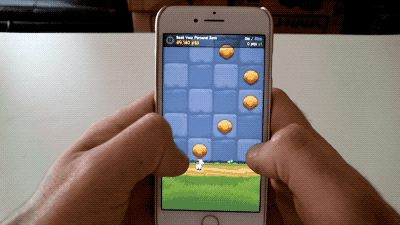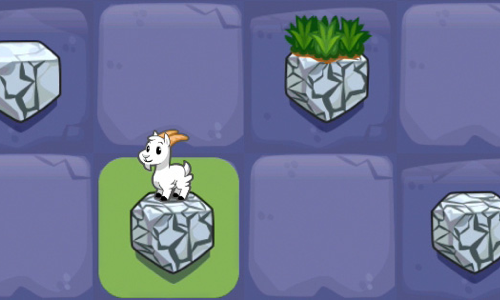Released May, 2015 on iOS (Canada only), PopCap/EA
While at PopCap, I spent 2 years as a designer within the PopLabs prototyping group, where I worked with the talented Jason Hamilton to rapidly develop new game concepts. Over a period of roughly 17 months we developed four highly playable — and, dare I say, fun — game prototypes. The fourth was Boulder Goat, which was soft-launched in Canada after only an additional 5 months in production, with a core team of only 10 (highly talented) people.
Boulder Goat stars the eponymous protagonist — once the loneliest goat at the bottom of the lowest valley — as they set out to realize their dream of finding new friends, and climbing every mountain. The gameplay was inspired by the puzzle-like qualities of indoor climbing, as well as the “mastery through failure” model of games like Terry Cavanagh’s VVVVVV and Super Hexagon. There’s even a bit of DDR in there for good measure.
We designed for the phone first, wanting a mechanic that was no more difficult to execute than typing on a virtual keyboard. We also wanted the game to be playable one-handed (for when you’re waiting in a line or standing on a bus). Boulder Goat’s levels are grid-based as a result, never getting any wider than four across to keep all the board elements large and tappable.

(Because of this design, Boulder Goat is actually a very “stealth” game; when you’re playing, to others it just looks like you’re typing.)
Boulder Goat was designed to be incredibly easy to learn, and our user testing showed that players were able to quickly understand the conventions of the game without any real textual instruction. The result was a challenging game which was satisfying to learn, and a memorable project for the entire team.
Roles: lead designer, user experience designer, game designer, writer







































